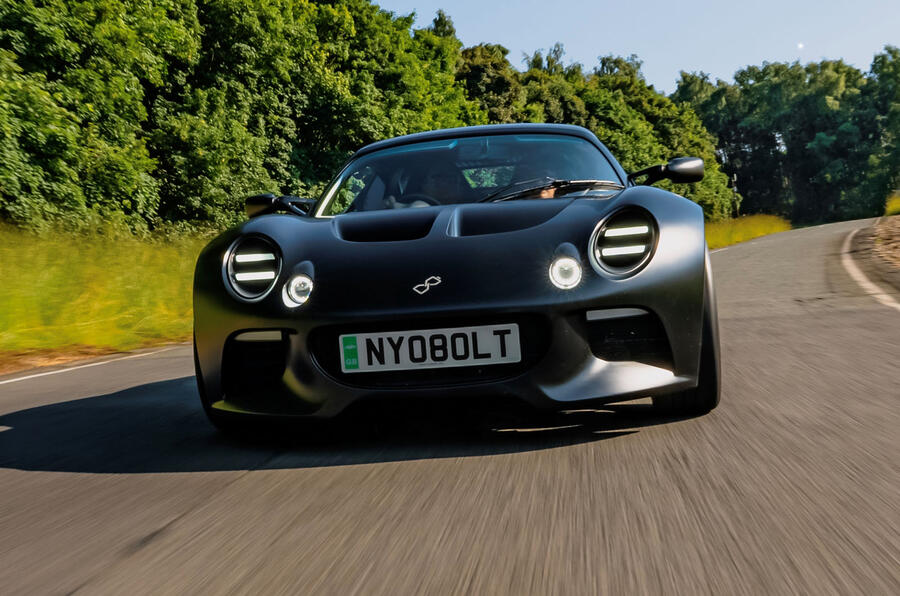UK engineering firm Nyobolt is testing its ultra-fast charging and highly durable EV battery technology in a drivable version of its Lotus Elise-inspired concept.
Revealed last year as a static show car, the Nyobolt concept is a 470bhp, 1246kg electric reworking of the S1 Lotus Elise, designed by the man who penned the original, Julian Thomson.
Beneath its semi-familiar bodywork, the Nyobolt EV is a testbed for a new generation of battery that could represent a step change in electric vehicle range, charge times and longevity.
Cambridge-based Nyobolt says its high-density cell technology and battery management software could be used to optimise electric vehicle powertrains for “high-uptime” EVs that “demand high power and quick recharge cycles”.
Initial testing with the running prototype this month has confirmed that its 35kWh battery can be charged from 10-80%, using a 350kW charger, in just 4min 37sec, which Nyobolt says is “twice the speed of most of the fastest charging vehicles today”.
Nyobolt has also carried out some 4000 full fast charge cycles – which it says represents travelling around 600,000 miles – and claims the battery retained more than 80% of its usable capacity.

“This is many multiples higher than the warranties of much larger EV batteries on the road today”, it said.
While Nyobolt envisions a broad range of applications for this technology beyond cars, it is not pure coincidence that the company is showcasing its potential in an Elise-based prototype.
The company says a particular benefit of its cell technology is that it minimises the size and weight of the battery packs, with the concept tipping the scales at just 1246kg – scarcely more than a Renault Clio.
The company’s director of vehicle battery systems Shane Davies touted the dynamic benefits of lightweight EV powertrains: “We can enable OEMs to build excitement back into the segment, which is literally weighed down by legacy battery currently.